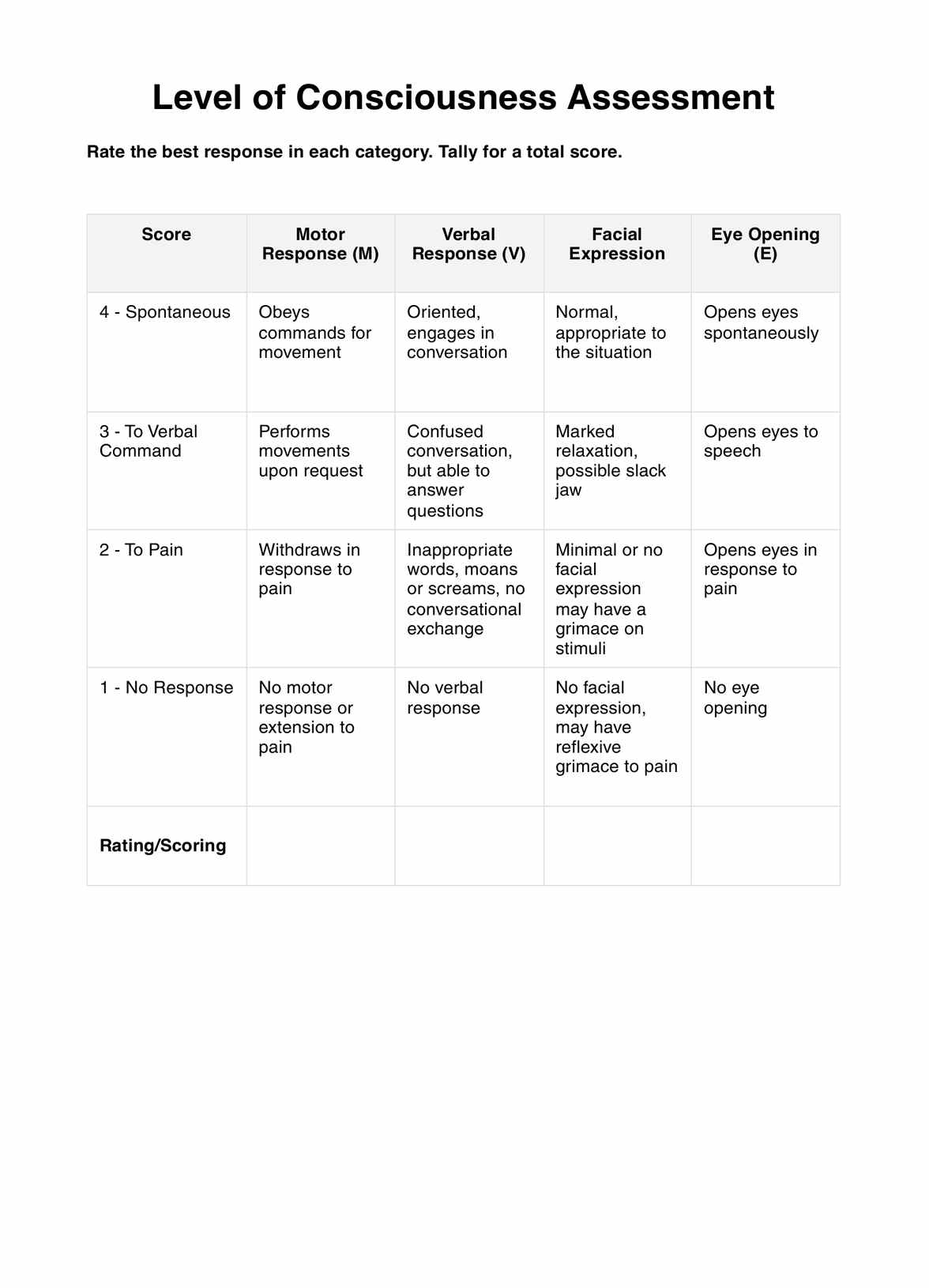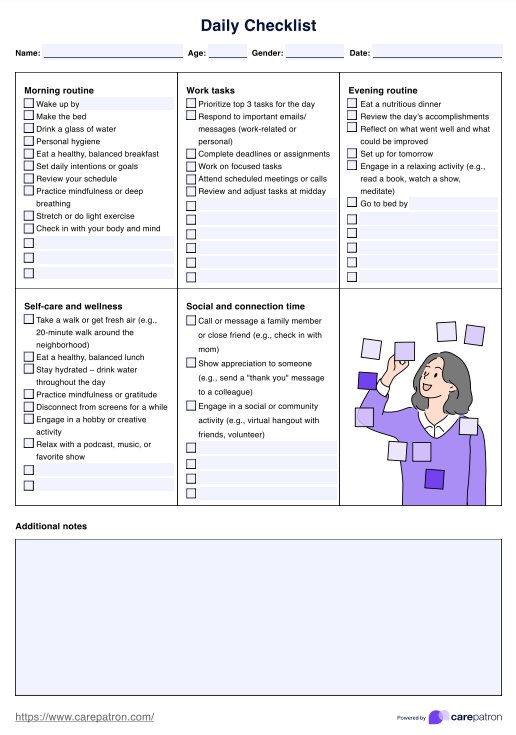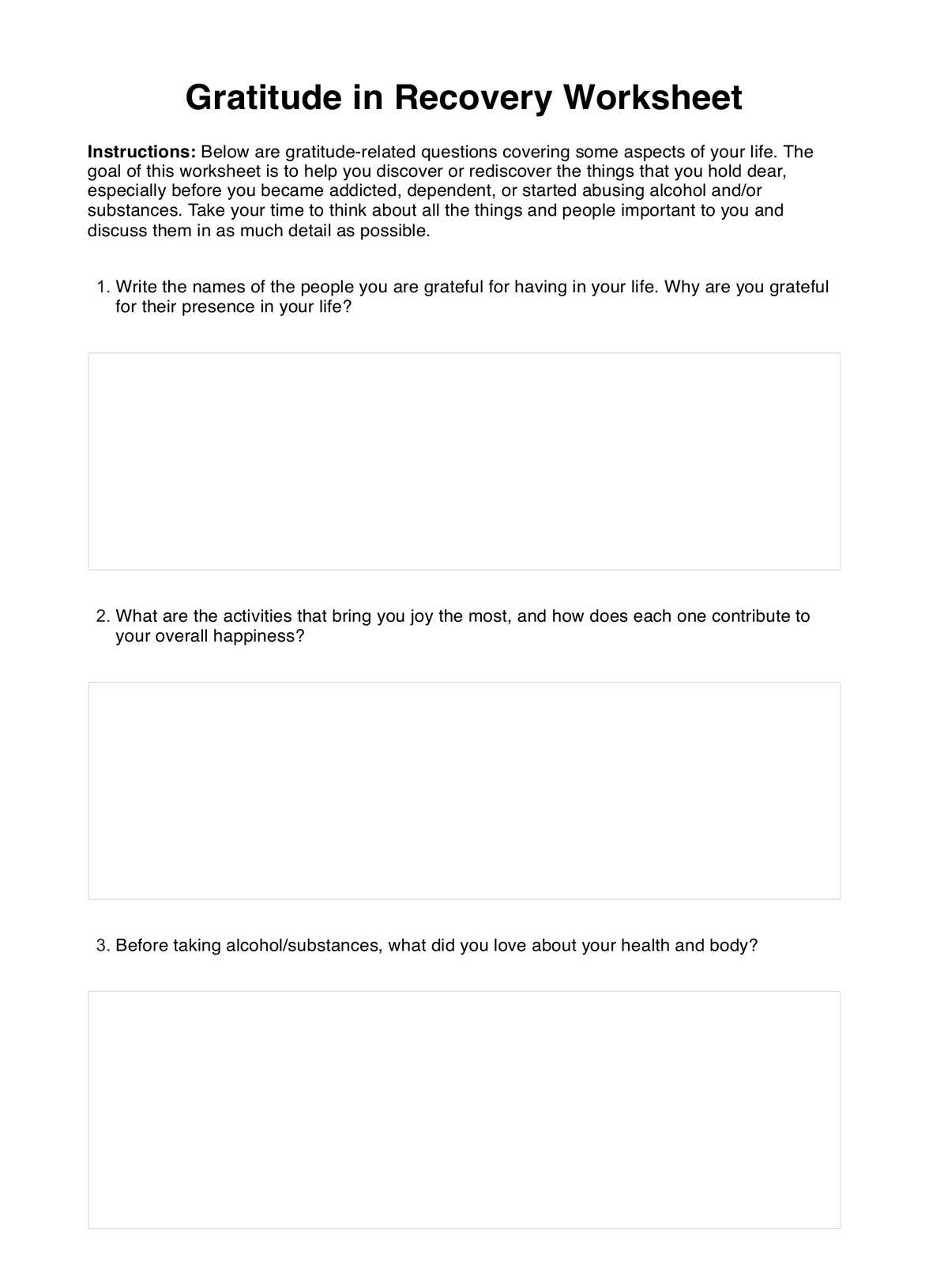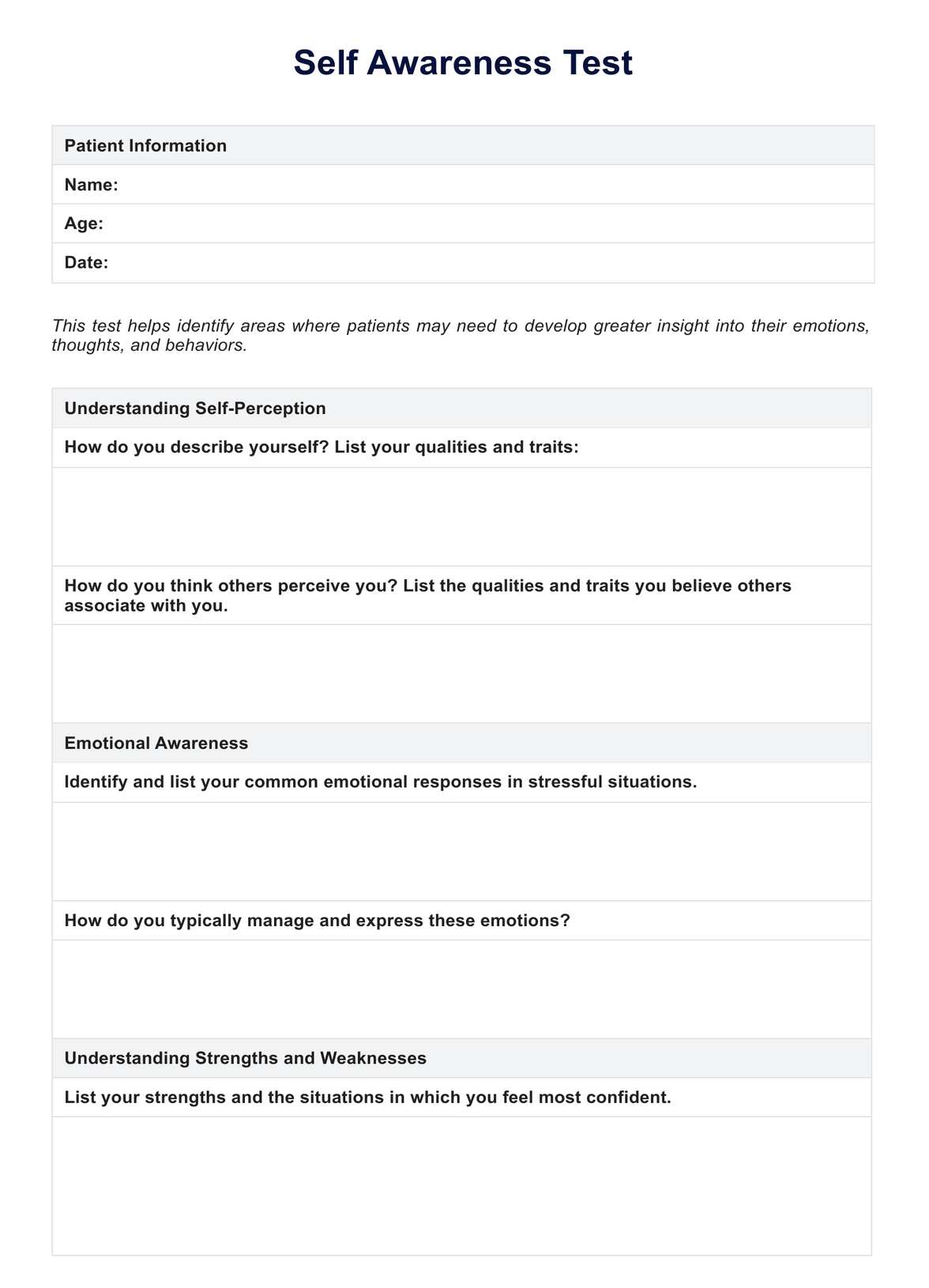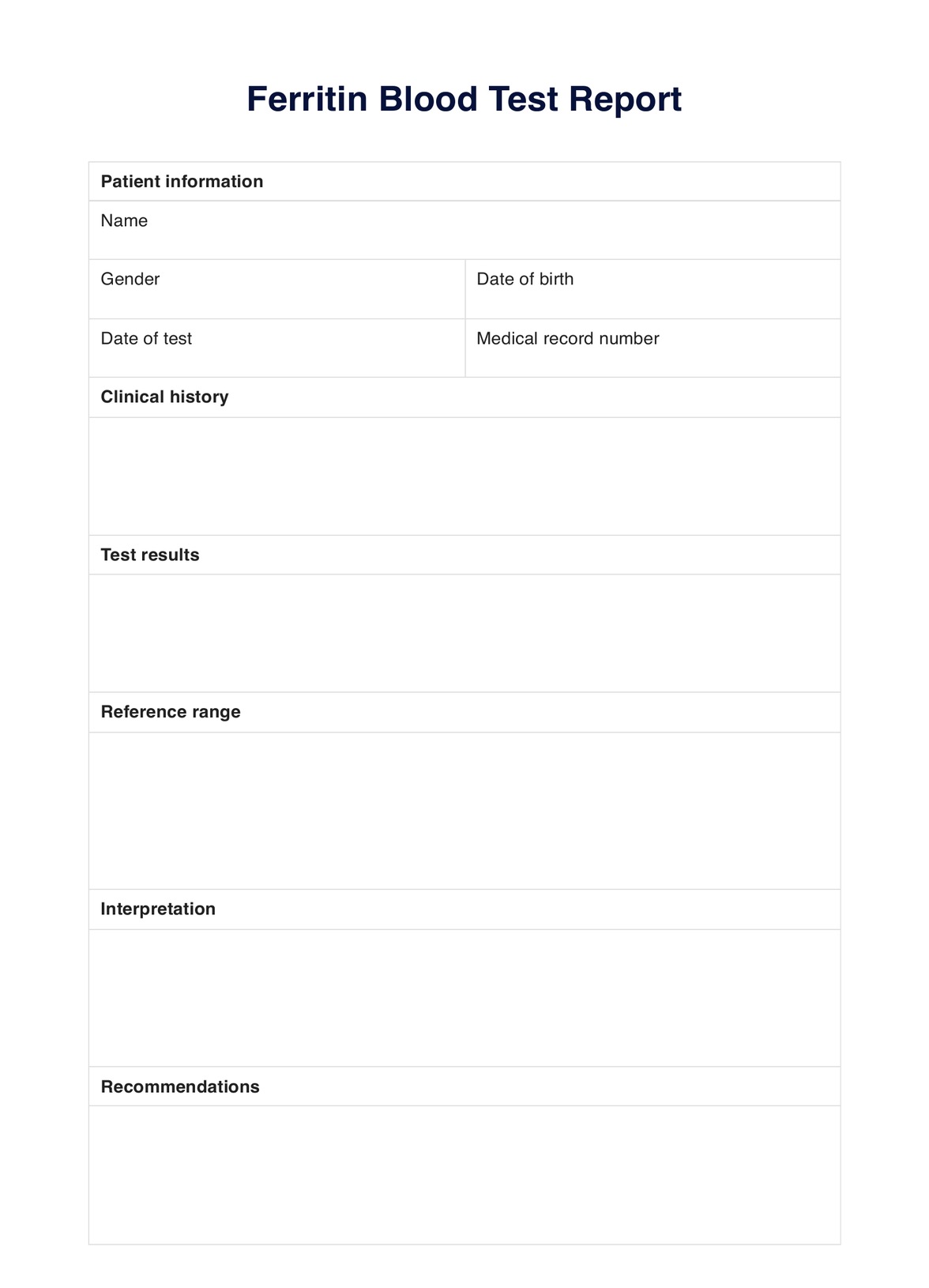Sensory Profile Questionnaire
Get access to a Sensory Profile Questionnaire for caregivers. Learn how to score this 125-item assessment to understand a child's sensory processing pattern.


What is a sensory profile?
A sensory profile is an assessment tool used by occupational therapists to understand how an individual processes and responds to sensory information from their environment. This includes the five main senses - sight, hearing, touch, taste, and smell - as well as other sensory experiences such as movement and balance.
Occupational therapist Winnie Dunn created one of the most recognized frameworks for understanding how individuals interact with sensory information. Dunn's sensory processing framework is based on two key constructs: neurological thresholds and behavioral response (Brown et al., 2001).
The neurological threshold construct refers to the level of response needed for sensory stimuli existing on a low-to-high continuum. Individuals with low thresholds respond quickly to stimuli, while those with high thresholds may miss cues that others notice, leading to daily challenges. Dunn's framework indicates that unique thresholds arise from a balance of excitation and inhibition, differing across sensory modalities (Dunn, 2007). The behavioral response ranges from passive to active strategies, with passive individuals reacting internally without changing their environment, while active individuals proactively manage their sensory input.
Dunn's 1999 assessment tool, the Sensory Profile, provides valuable insights for parents and healthcare professionals into a child's sensory processing patterns in everyday life. By profiling how the sensory system affects functional performance, it supports diagnostic and intervention planning.
The Sensory Profile assessment tool comes in various versions for different age groups. The original Sensory Profile includes 125 items for children aged 3 to 10 years. The Sensory Profile Short Form offers a concise 38-item option for the same age range. Sensory Profile 2 provides comprehensive forms for infants, toddlers, children, and school-aged individuals, covering ages 0 to 14 years. Finally, the Adolescent/Adult Sensory Profile is designed for those aged 11 and older and is completed via a self-report form.
The school companion sensory profile form allows caregivers or educators to complete the assessment. For certain age groups, a self-reported version (PROM) is also available.
Sensory Profile Questionnaire Template
Sensory Profile Questionnaire Example
How does this sensory profile caregiver questionnaire work?
The questionnaire provides valuable insights to help create a tailored intervention plan to address the child's sensory responses. Here's a step-by-step guide on how you can access and administer this resource:
How does this sensory profile caregiver questionnaire work?
Carepatron has created an easy-to-use version of the 125 Sensory Profile Questionnaire for caregivers. The questionnaire can be completed quickly and easily, providing a comprehensive overview of the child's sensory needs. Here's how to get started:
Step 1: Download the questionnaire
To make the most of this fully customizable template in the Carepatron app, just click the "Use Template" button. You can also click the "Download" button to get a PDF version for your records.
Step 2: Explain how it works
Provide a copy to the child's caregiver and explain the questionnaire process to them. The caregiver will complete the questionnaire by reporting on how frequently their child responds to different sensory events and experiences.
Step 3: Complete the questionnaire
The questionnaire consists of 125 questions that cover various sensory experiences, such as touch, movement, sound, and visual stimuli. Caregivers should answer each question based on how often their child responds to that particular experience.
Step 3: Use a Summary Score Sheet
Once the questionnaire is completed, caregivers can use a Summary Score Sheet (not included in the template) to help summarize the child's scores. This will provide a clear overview of the child's sensory patterns and processing.
Step 5: Identify sensory needs and strategies
Based on the results of the questionnaire, provide recommendations and strategies to address the child's sensory needs. These may include environmental modifications, sensory tools, or specific activities that can help regulate the child's sensory system.
Scoring
Sensory profile scoring is essential to interpreting the Sensory Profile Questionnaire results. It helps healthcare practitioners identify the child's sensory processing patterns and preferences, allowing them to create a tailored intervention plan.
To score the 125-item caregiver questionnaire, healthcare practitioners must first tally the caregiver's responses for each item. The rating scale ranges from 1 (almost never) to 5 (almost always), with higher scores indicating a higher frequency of specific sensory responses.
Next, practitioners must transfer these raw scores to the Summary Score Sheet containing a Factor Grid and a Section Summary. The grid helps summarize the child's scores into nine-factor groupings, while the Section Summary allows practitioners to plot section raw score totals.
The raw scores for subscales and quadrants are calculated and then converted into percentile ranks, ranking individuals according to four sensory processing patterns.
By understanding sensory profile scoring, healthcare practitioners can effectively analyze the data collected from the questionnaire and develop targeted strategies to address the child's unique sensory needs. This information is crucial for enhancing the child's functional performance in daily activities and ensuring that they receive consistent support across various environments.
When should these sensory profile caregiver assessments be used?
These assessments are valuable for healthcare practitioners, educators, and families in understanding a child's sensory processing patterns and preferences. These assessments can provide insights into a child's strengths and potential challenges, helping to create tailored intervention plans. Below are several situations when it's appropriate to use these assessments:
- Early identification of sensory processing difficulties: The sensory profile caregiver assessments can be used as a screening tool to identify children with sensory processing difficulties. Early identification allows for timely interventions and support, which can significantly impact the child's development and overall functioning.
- Developing individualized intervention plans: The results of the assessments can help healthcare practitioners create customized intervention plans that address the child's unique sensory processing needs. These plans can be shared with educators and family members to ensure the child receives consistent support across various settings.
- Monitoring progress over time: Sensory profile caregiver assessments can be administered periodically to track a child's sensory processing patterns and preferences. This information can help healthcare practitioners evaluate the effectiveness of intervention strategies and make necessary adjustments to support the child's needs.
- Transition planning: As children grow and transition between different environments (e.g., home, school, community), their sensory processing needs may change. The assessments can be used to identify any new sensory challenges that arise during these transitions, helping to ensure that the child receives the necessary support to succeed in each environment.
- Facilitating communication among caregivers: The assessments can provide a common language for discussing a child's sensory processing needs among healthcare practitioners, educators, and family members. This shared understanding can improve collaboration and consistency in supporting the child across various settings.
- Research and program evaluation: The assessments can be used in research studies to understand better the prevalence and impact of sensory processing difficulties in specific populations. The data gathered from these assessments can also be used to evaluate the effectiveness of sensory-based interventions and programs.
Who is this Sensory Profile Questionnaire for?
While this version of the questionnaire is designed for caregivers, a wide range of practitioners who work with children and are involved in supporting their sensory processing needs can also use it. This tool can be beneficial for various professionals, including:
- Occupational therapists: Occupational therapists can use the questionnaire to identify children's sensory processing patterns and preferences. This information can help them create individualized intervention plans for specific sensory needs. The information gathered can also guide recommendations for home—and school-based accommodations.
- Speech and language pathologists: Speech and language pathologists can use the questionnaire to understand how sensory processing difficulties may impact a child's communication skills. This information can help them create tailored intervention strategies for sensory and communication needs.
- Psychologists and counselors: Psychologists and counselors can use the questionnaire to understand the sensory aspects of a child's behavior and emotional regulation. This information can inform therapeutic interventions that address sensory processing challenges and improve the child's overall mental health.
- Special education teachers: Special education teachers can use the questionnaire to create sensory-friendly learning environments that support the needs of children with sensory processing difficulties. The information gathered can also inform the development of Individualized Education Programs (IEPs) or 504 plans.
- Parents and caregivers: Parents and caregivers can better use the questionnaire to understand their child's sensory processing patterns and preferences. This information can help them advocate for their child's needs and collaborate with other practitioners to create a consistent support system across various settings.
This sensory processing assessment, which caters to a diverse range of practitioners, serves as a valuable resource for identifying and addressing children's sensory processing needs, ultimately enhancing their overall well-being and functioning in various environments.
References
Brown, C., Tollefson, N., Dunn, W., Cromwell, R., & Filion, D. (2001). The adult sensory profile: Measuring patterns of sensory processing. American Journal of Occupational Therapy, 55(1), 75–82. https://doi.org/10.5014/ajot.55.1.75
Dunn, W. (1999). The Sensory Profile. Psychological Corporation.
Dunn, W. (2007). Supporting children to participate successfully in everyday life by using sensory processing knowledge. Infants & Young Children, 20(2), 84–101. https://doi.org/10.1097/01.IYC.0000264477.05076.5d
Commonly asked questions
The Sensory Profile Questionnaire assesses a child's sensory processing patterns and preferences, helping healthcare practitioners, educators, and families identify the child's strengths and challenges. This information can then be used to develop individualized intervention plans and accommodations to support the child in various settings.
The Sensory Profile Questionnaire can be administered by a range of health and education professionals, including occupational therapists, speech and language pathologists, physical therapists, psychologists, counselors, special education teachers, and pediatricians. Parents and caregivers can also complete the questionnaire to provide valuable insights into their child's sensory processing.
The Sensory Profile Questionnaire is scored by tallying the caregiver's responses for each item and transferring these raw scores to a Summary Score Sheet. The Factor Grid and Section Summary on the sheet help summarize the child's scores into nine-factor groupings and plot section raw score totals, which healthcare practitioners can then use to identify sensory processing patterns, preferences, and areas that may require intervention.
The four types of sensory profiles identified in the sensory profile assessment are sensory seeking, sensory avoiding, sensory sensitivity, and low registration. Understanding these multiple sensory patterns is crucial to inform clinical practice, as it enhances the assessment and planning processes for individualized interventions. By analyzing each child's unique sensory profile, practitioners can create tailored strategies that improve the child's daily functioning and participation in various activities, ultimately fostering a more supportive environment for their sensory needs.


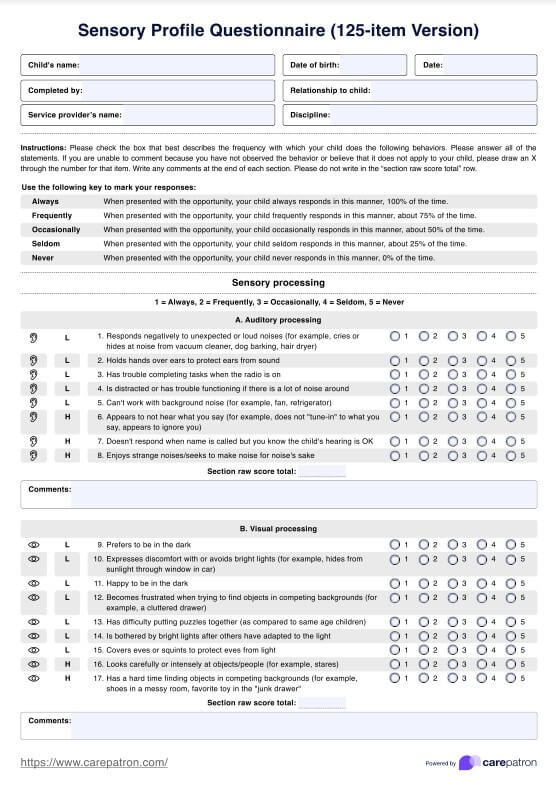
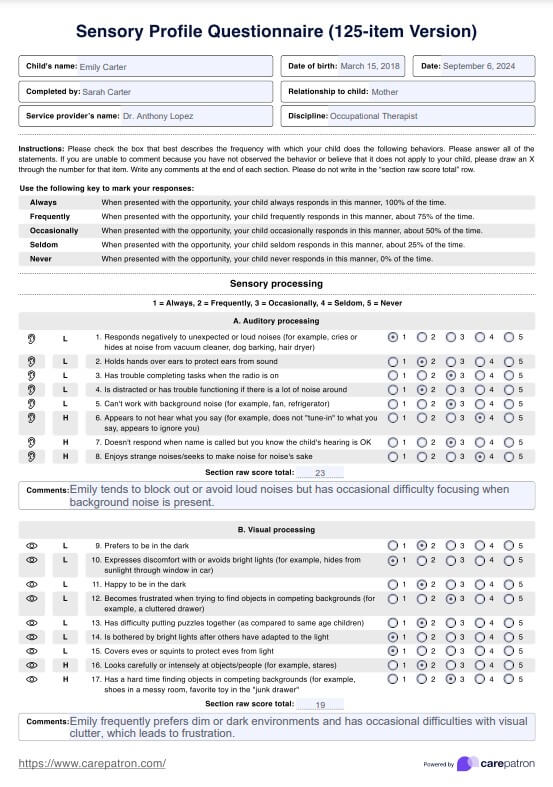


















-template.jpg)

















































































